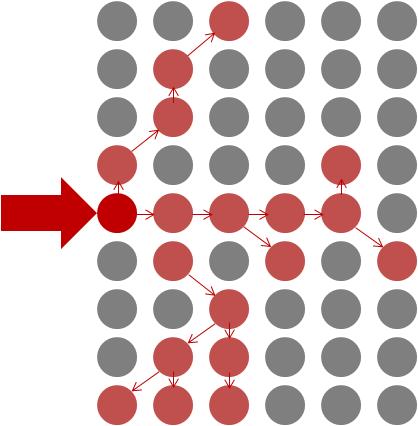The “Death of Marketing” Has Been Announced Prematurely
Aug 23, 2010 Industry News, Marketing And Advertising Analytics, Social Media, Web Analytics
Has there been a fundamental change in how people think about and buy goods and services? Is old-school marketing dead?
According to the recently-minted orthodoxy of social media, marketing is being transformed, and we are moving from the Age of Push to the Era of the Conversation. The Don Drapers of the world, they say, will now have to play the new way, find new jobs or become hobos. Participation in a conversation is voluntary, per the new theory, meaning marketers can’t unilaterally control conversations and so now must learn to communicate differently with the people in the marketplace.
WHAT HASN’T CHANGED
Marketing Has Always Been A Conversation – Marketers Just Haven’t Recognized It Until Now
There is an important truth here – much of the conversation about brands and products is intra-customer, and doesn’t involve the marketer at all. This has always been the case, but it just has not been as observable until it started happening online.
Audiences Have Always Been Able to Walk Away
Audiences have always asserted more control over the “conversation” than marketing models have admitted. People have been fast-forwarding and channel-surfing through television ads since they figured out which remote control buttons to use. Since the very birth of mass media, admen and their clients have been solving and re-solving the problem of how to entice an audience to listen to their stories instead of wandering off to grab something from the refrigerator.
Propaganda Still Works
Working against this is has always been the fact that (as psychological experiments have shown) repeated messages have an influence on peoples’ perceptions and behavior even if they are skeptical or not paying full attention, and even if they are aware they are being ‘sold’.
WHAT HAS CHANGED
The Emergence of Social Media
Thanks to social media lowering the bar for what constitutes a relationship, people are regularly engaging in communication with a wider circle of casual or low-involvement contacts.
Conversations are Observable and Trackable
We can find out what people are saying about brands and our products (at least when they happen in online social media). These conversations can assert a great deal of influence on buying behavior.
Advertisers and Marketers can Participate in the Conversation
Marketers can, when they decide it is to their advantage, participate in these conversations and assert some influence on the the agenda and the messages
Advertisers and Marketers can START the Conversation
Marketers can initiate conversations, and they can provide the platform or venue for these conversations to take place. However, the the attempt can backfire. Conversations can and will change locations if a community gets the sense that there is excessive censoring or propagandizing.
SO?
So, things have changed, but not that much. People still need to buy things, they still need to decide what to buy and where to buy it. It’s just that now, people increasingly use social media (among other channels) to get information about products and services they are considering. Social networks have always been influential, but now they are pervasive, instantaneous, and measureable. So you shouldn’t ignore social media, you should listen to and participate in it. That’s all.
Tags: Death of Marketing, Don Draper, Facebook, hobo, LinkedIn, listening, Listening programs, marketing, Marketing as Conversation, Social Media, Twitter
The Digital Nervous System
Aug 20, 2010 Industry News, Marketing And Advertising Analytics, Statistics, Web Analytics
The web can function like a giant extension of the human nervous system. Like a spider at the center of a giant global web, you can collect and observe streams of data coming from all over the digital expanse: searches, tweets, forums, blogs, newspaper and magazine sites, press releases, Facebook and LinkedIn. Each time someone looks for or mentions your company or your product you are alerted, and you can choose in that moment to respond to it, ignore it or wait until you have more information.
Does this sound like anything you are doing now? Someone should be doing this for your company, because marketing has increasingly become an ongoing series of conversations (whether you participate in the conversation or not).
EXPERIMENT: DETECTING INSTANT RESPONSE TO MEDIA WITH THE INTERNET
There are several national TV shows that frequently have book authors as guests (the Daily Show, The Colbert Report, The Today Show, Good Morning America). The next time you find yourself in front of one of these shows when an author is on plugging their book, try the following experiment (this will work best with a show with a national audience):
1. Fire up your laptop and go to amazon.com
2. Search in the Books category for the title of the book the author is plugging on the show you are watching
3. Click to the Amazon page for that book.
4. Scroll down past the synopsis and the reviews to the section labelled Product Details. It should look something like this:
The number I have circled is the book’s current sales rank on Amazon.
5. Every few minutes while the author is on the show and for a while after that (until you bore of this experiment), hit function key f5 to refresh the page and watch what happens to the book’s sales ranking.
The rank should get better – in real time – as you are sitting there. I have done this several times when my brother-in-law has done TV appearances to promote his books, and it is amazing. Once he was on Oprah Winfrey and we saw the sales rank improve precipitously from 20-something into the top 10 while he was being interviewed.
Now imagine all the other analogous information streams there are available on the internet. If you could get the monitoring automated, just think of how quickly you will know exactly what the world thinks of your new site, your new ad campaign, your new product. Just think of what you’d be missing by NOT knowing.
EXTRA CREDIT EXPERIMENT #1 – THE TWITTER BUMP
In between rank checks you should do check in on Twitter searches for the author’s name and the book’s name. These should also pop during the author’s TV appearance.
EXTRA CREDIT EXPERIMENT #2 – THE GOOGLE BUMP
After a day or so you should go to Google Trends and see what happened to searches for the author’s name and the book’s name. These should’ve spiked on the day the author did the TV appearance. Google Trends doesn’t provide much flexibility about getting more granular (in time) data in a more real-time way, and it looks like the beta for Google Insights for Search has a latency of a couple of days.
GOOGLE EPIDEMIOLOGY – WHO KNEW THEY COULD DO THAT?
Take a look at the Google Flutrends project (http://www.google.org/flutrends) and you can see what an amazingly useful datasource this would be with access to the full detail in realtime. It turns out that counting Google searches for flu information is a quicker detector of flu epidemics than CDC reports are.
I believe it would be just as accurate in detecting other kinds of contagion sweeping through the world: fads, emerging trends, scares, rumors, accidents, disasters – this is the kind of information that businesses need to know when it involves their products, their brands, or their markets.
Tags: Amazon Book Rankings, Amazon.com, Digital Nervous System, Google Search Insights, Google Trends, Listening programs, Real-time trend detection, Social Media Montoring, Twitter

